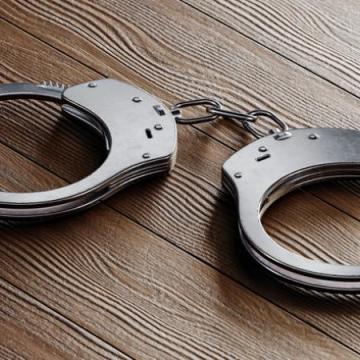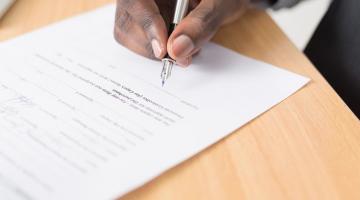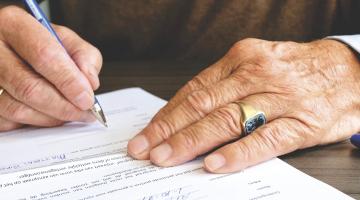How Much Can You Sue for Slip and Fall?
Slip and fall accidents are common incidents that can lead to serious injuries and significant financial burdens. Understanding the potential compensation available is crucial for victims to make informed decisions about pursuing legal action. This article aims to provide a comprehensive guide on how much you can sue for a slip and fall accident, considering various factors that influence the value of a case.
Factors Influencing the Value of a Slip and Fall Case
Severity of Injuries
The severity of injuries sustained in a slip and fall accident is a primary factor in determining the potential compensation. Minor injuries, such as bruises and sprains, typically result in lower settlements compared to major injuries like fractures, spinal cord injuries, or traumatic brain injuries. The extent of the injury directly impacts medical expenses, lost wages, and pain and suffering, all of which contribute to the overall value of the case.
Medical Expenses
Medical expenses are a significant component of a slip and fall claim. These expenses include immediate medical costs such as emergency room visits, surgeries, and hospital stays. Long-term medical care, including physical therapy, rehabilitation, and ongoing treatment, also plays a crucial role in determining the compensation amount. Accurate documentation of all medical expenses is essential for a fair settlement.
Lost Wages and Loss of Earning Capacity
In addition to medical expenses, victims may also be entitled to compensation for lost wages and loss of earning capacity. Lost wages refer to the income lost during the recovery period when the victim is unable to work. Loss of earning capacity considers the long-term impact of the injury on the victim's ability to earn a living. This can include a reduction in work hours, a change in job roles, or an inability to return to work altogether.
Pain and Suffering
Pain and suffering is a non-economic damage that accounts for the physical pain and emotional distress caused by the accident. This type of compensation is more subjective and can vary widely from case to case. Factors such as the duration of the pain, the severity of the emotional distress, and the impact on the victim's quality of life are considered when calculating pain and suffering damages.
Liability and Negligence
Establishing liability and negligence is crucial in a slip and fall case. The victim must prove that the property owner or occupier was negligent and that this negligence directly caused the accident. Factors such as the condition of the property, the presence of warning signs, and the actions of the victim at the time of the accident are examined. Comparative negligence, where the victim is partially at fault, can also affect the compensation amount, potentially reducing the settlement based on the victim's percentage of fault.
Types of Damages in Slip and Fall Cases
Economic Damages
Economic damages are quantifiable financial losses incurred due to the accident. These include medical bills, lost wages, and property damage. Medical bills cover all healthcare-related expenses, while lost wages compensate for the income lost during the recovery period. Property damage may include personal items damaged in the fall, such as clothing or electronic devices.
Non-Economic Damages
Non-economic damages are more subjective and cover the intangible losses experienced by the victim. Pain and suffering, emotional distress, and loss of enjoyment of life are common non-economic damages. These damages aim to compensate for the physical and emotional impact of the accident on the victim's life.
Punitive Damages
Punitive damages are awarded in cases where the defendant's conduct was particularly egregious or malicious. The purpose of punitive damages is to punish the defendant and deter similar behavior in the future. These damages are not commonly awarded in slip and fall cases but may be considered in extreme circumstances.
Case Examples and Precedents
High-Profile Cases
High-profile slip and fall cases can provide valuable insights into potential compensation amounts. For example, in some cases, victims have received substantial settlements or verdicts due to the severity of their injuries and the clear negligence of the property owner. These cases often set precedents that influence future settlements and court decisions. Detailed analysis of these cases can help victims and their attorneys understand the factors that lead to higher compensation.
Typical Settlement Amounts
While high-profile cases can result in significant payouts, the average settlement for slip and fall cases varies widely. Typical settlements can range from a few thousand dollars to several hundred thousand dollars, depending on the factors discussed earlier. Understanding the typical settlement amounts can help victims set realistic expectations and make informed decisions about pursuing legal action.
Steps to Take After a Slip and Fall Accident
Immediate Actions
Taking the right steps immediately after a slip and fall accident is crucial for building a strong case. First and foremost, victims should seek medical attention to ensure their injuries are properly diagnosed and treated. Prompt medical care also provides essential documentation for the case. Additionally, reporting the accident to the property owner or manager is important. This creates an official record of the incident, which can be valuable evidence later on.
Evidence Collection
Collecting evidence is a critical part of a slip and fall case. Victims should document the accident scene by taking photographs or videos, noting any hazardous conditions that contributed to the fall. Gathering witness statements can also be beneficial. Keeping detailed records of medical treatments, expenses, and any communication with the property owner or insurance companies is essential for supporting the claim.
Legal Consultation
Consulting with a legal professional experienced in slip and fall cases is highly recommended. An attorney can provide valuable guidance on the legal process, help gather and organize evidence, and negotiate with insurance companies on the victim’s behalf. Legal representation can significantly increase the chances of obtaining fair compensation.
Conclusion
In conclusion, the amount you can sue for a slip and fall accident depends on various factors, including the severity of injuries, medical expenses, lost wages, pain and suffering, and the degree of liability and negligence. Understanding these factors and the types of damages available can help victims make informed decisions about pursuing legal action. For more information on specific cases, such as those occurring in retail environments, you can refer to this auto parts store slip and fall resource. By taking the appropriate steps after an accident and seeking legal consultation, victims can improve their chances of receiving the compensation they deserve.
More to Read:
Previous Posts:






